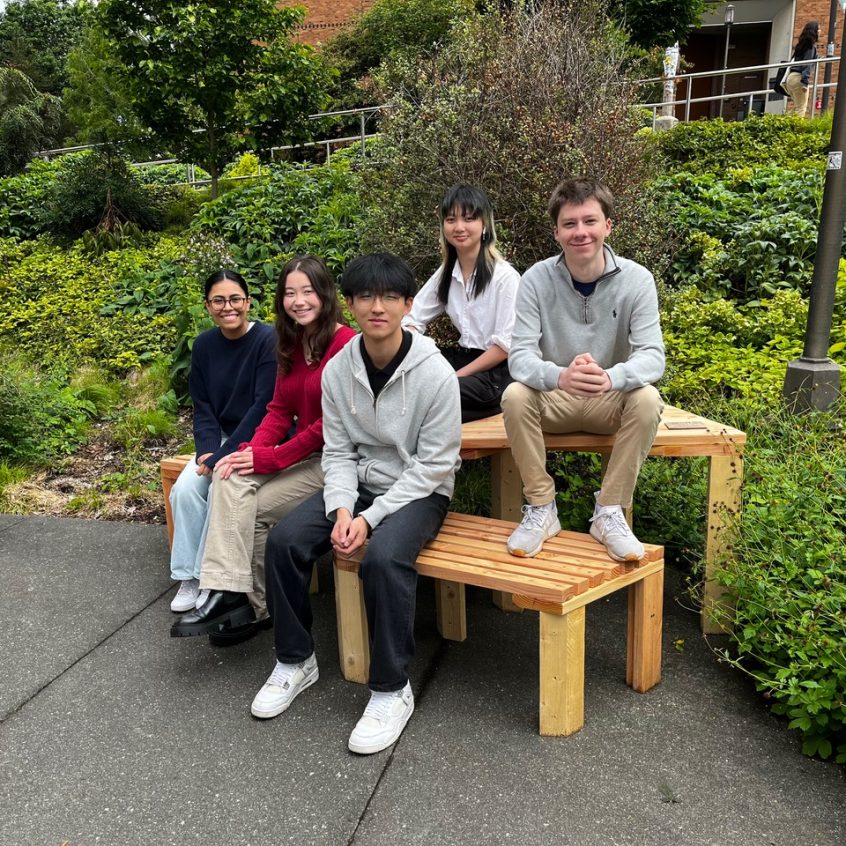University of Washington College of Built Environments architecture students took their skills beyond the classroom, designing and constructing unique benches throughout the Seattle campus. The project, which combined practical design experience with enhancing the campus environment, resulted in functional and visually engaging seating areas made of wood sourced from Washington timber suppliers.
Sustainable Forestry Initiative Implementation Committee (SIC) generously provided the University of Washington students with lumber sourced locally from Sierra Pacific Industries and Hampton Lumber working forests.
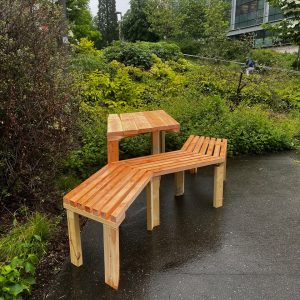
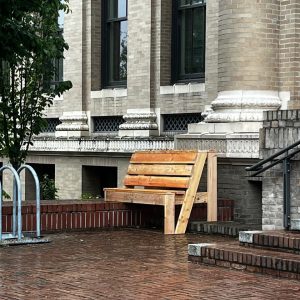
As part of a collaborative studio course, students designed and constructed benches that complement the university’s landscape while addressing practical needs like functionality, ergonomics, accessibility, sustainability, and cultivating community. The students transformed their concepts into reality throughout the quarter, working through the design-build process — from drafting initial blueprints to the group hand-constructing the benches.
“It is said that the most sustainable material is the closest one,” said Jim Nicholls, University of Washington Architecture associate teaching professor. “In our Northwest case, that is wood. For student assignments, wood is accessible, workable, lasting, and also very recyclable. The campus bench project is about social engagement and place-making. It is a manageable and productive team project, introducing students to making and design.”
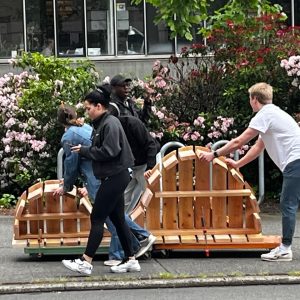
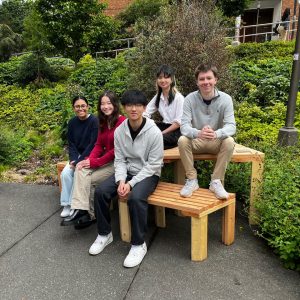 In addition to creating a functional bench intended to seat at least two people, student designs also considered the location and whether it fostered physical and cultural engagement and developed the seating to meet specific site needs. While campus benches inherently serve as practical spaces to work, rest, and reflect, Nicholls challenged architecture students to create innovative designs that cultivated communal gatherings and celebrated “the act of sitting together in a public space.” The hope was to find new ways to design a bench that encouraged social interaction by providing diverse seating methods.
In addition to creating a functional bench intended to seat at least two people, student designs also considered the location and whether it fostered physical and cultural engagement and developed the seating to meet specific site needs. While campus benches inherently serve as practical spaces to work, rest, and reflect, Nicholls challenged architecture students to create innovative designs that cultivated communal gatherings and celebrated “the act of sitting together in a public space.” The hope was to find new ways to design a bench that encouraged social interaction by providing diverse seating methods.
The wood benches, located throughout the university campus, showcased a range of styles and inspirations. Students designed each seating area to harmonize with its surroundings, blending seamlessly with the campus’s architecture and landscaping. Some worked to integrate their construction into nearby buildings, surrounding flora, and structures, while others drew upon inspiration from natural forms with organic, flowing, and even curved lines.
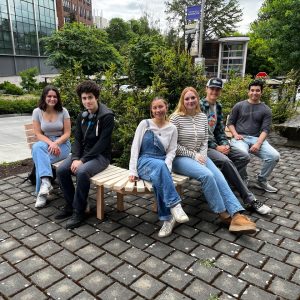
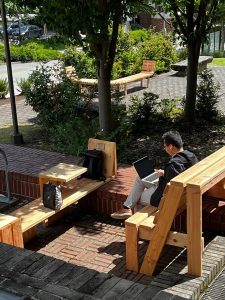
This is where designing and building with wood offers numerous benefits – especially for students with limited construction experience. Wood is:
- Easy to work with and often doesn’t require specialty tools or extensive experience and skill.
- Readily available and natural.
- Lighter in volume than other traditional building materials like concrete and steel.
- Durable and structurally strong.
- Recyclable, renewable and reusable.
- An environmentally responsible material – especially from well-managed and local forests.
Nicholls noted that students must understand how design impacts the user experience and underscored the importance of hands-on learning in helping architecture students better understand design, crafting, installation, and merging creativity and functionality. Said Nicholls: “An idea plus design equals an experience.”
